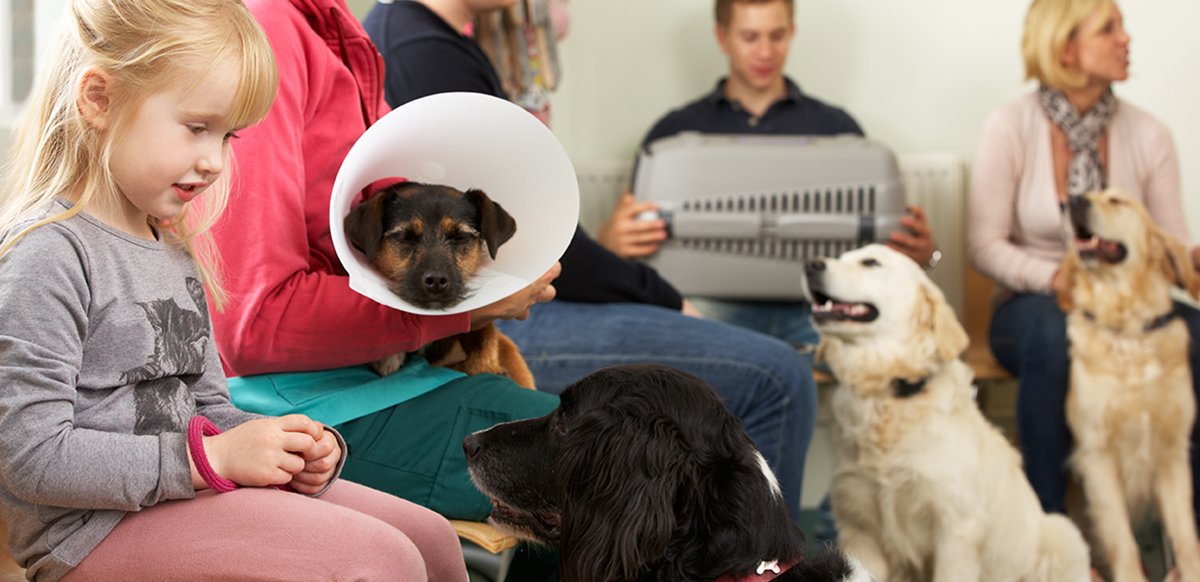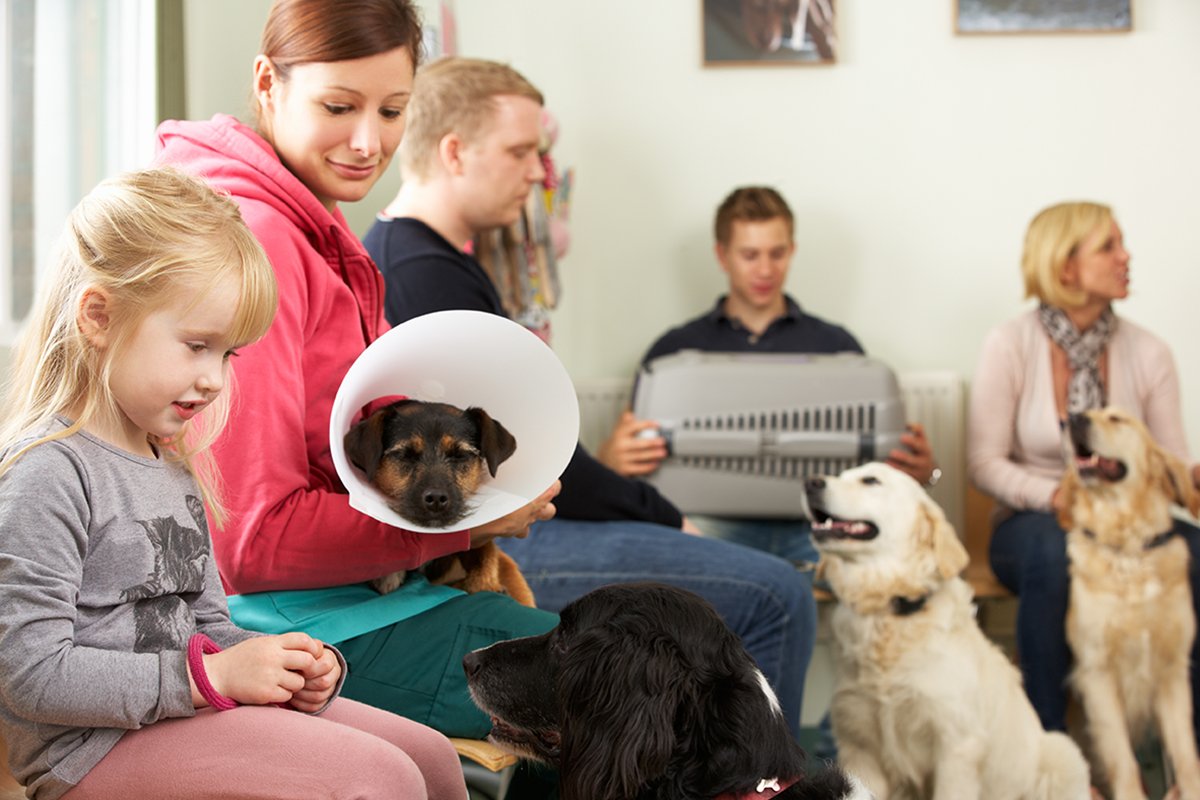
The design of your veterinary waiting room can determine the success of your business. There are multiple ways vets can create positive experiences for furry friends and their owners to keep both parties calm. Keep reading to explore the nuances of veterinary waiting room design.
The Importance of Keeping Humans Calm
Our pets are able to pick up on more than we realize. When we are stressed and on edge, they realize this and raise their anxiety levels as well. This is especially true in unfamiliar situations.
If humans are exhibiting nervous behavior, then their companion animals will think something is wrong and become nervous as well. Unfortunately, this tends to compound on itself, where the human then becomes even more nervous as their pets start to panic.
“When you maintain a pleasant and unconcerned demeanor, it increases the likelihood that your cat [or dog] will keep her cool, even in stressful situations,” VetStreet reports.
Calm pets are the best pets for vets. Veterinarians can spend more time handling the animals to understand their health and identify any problems, and calm demeanors decrease the chances of patients hurting themselves in an effort to escape. Ideally, calm pets need to be restrained less, creating a better experience for them.
One of the best things vets can do is design their veterinary waiting rooms with both humans and animals in mind.
Make It Easy for Patients to Check-In
When your clients enter the waiting room, they don’t want to guide their dogs or carry their cats to the front desk and wait with other animals to check-in.
Not all animals are social, and their first experience with your office could be a big dog or excited puppy. Instead, consider setting up touchscreen kiosks around the office. You can also set up a check-in station in the waiting area. This way your patients can get the patients settled and then check in while they wait.
This also frees up time for your front-desk staff, who can focus on helping patients and completing their work. Your office staff will appreciate the easy check-in, even if the move was made to calm down pets and their owners.
Choose Your Music Carefully
Music has the power to calm both your patients and their owners. Studies show that music affects animals almost as much as it affects humans.
Dogs who listened to classical music in a veterinary care setting were less anxious, slept more, and vocalized less. Investing in light overhead music that keeps classical music playing throughout the day can help pets and humans relax, creating a more positive vet experience.
However, you may want to consider taking the music experience up a notch. “Cats and dogs do seem to respond more to music created specifically for their species using certain tones and frequencies that mimic their vocal styles,” the team at Patton Veterinary Hospital writes.
Some companies specialize in creating music for cats or for dogs, and use multiple studies to prove that the music is effective at calming down the animals. You may want to invest in these playlists or add them to your overhead music to better connect with the animals visiting your office that day.
Incorporate TV Entertainment
If you’re looking to calm down humans as well as animals, set up a few TV monitors and other veterinary digital signage concepts with private label streaming for people in your waiting area.
Even if your human visitors are just bringing in their pets for a regular check-up, they might feel stressed about putting their pets in a scary situation. Entertainment can distract your pet parents and give them something to focus on other than their pets.
Spectrio offers private label TV streaming for veterinary offices, where you can choose the content and eliminate the commercials. Your entertainment can be animal-focused to play on the interests of people in your waiting area, or you can choose a diverse content selection to keep viewers engaged.
Consider keeping the TV volume low or even muting it with subtitles, especially if you are also playing music in your veterinary waiting room.
Too many noises on top of each other (music playing, TV ads, barking dogs, ringing phones, and talking humans) can overwhelm and confuse animals, having the reverse effect of what you want.
Invest In Tools to Calm Animals Down
There are multiple tools developed with the sole purpose of keeping animals calm. For example, Comfort Zone and Feliway are two air fresheners that also release pheromones for dogs and cats to calm them down. You might not notice the scent, but the smell tells cats and dogs that they are in a safe environment.
You can also include relaxing items in your veterinary waiting room. Some vets use bright colors and soft chairs to calm both pets and humans. That way a pet parent can relax with their dog curled up next to them on a soft bench. You may even include a few toys for the dogs to play with or chew on, or keep some treats handy as a distraction before they meet the vet.
See How Patients Respond to Your Veterinary Waiting Room
As you start to make changes to your veterinary waiting room, notice how your patients and their owners react. Do the animals seem calmer, giving your staff more time to handle them? Do the humans seem more relaxed and confident in your work? If so, then you’re doing your job right.
With these changes, you can start to grow your veterinary business and establish a reputation as one of the best vets in town.
Learn more about how you can improve and upgrade your veterinary waiting room to create a more comfortable atmosphere for pets and their owners by checking out our veterinary in-store marketing resource page.
